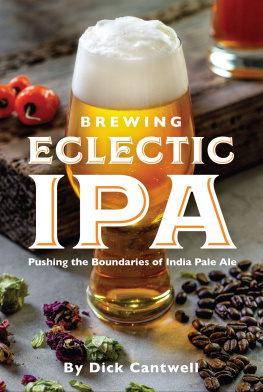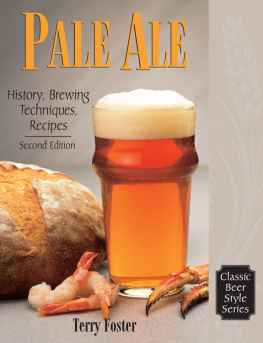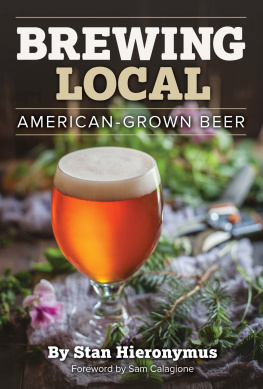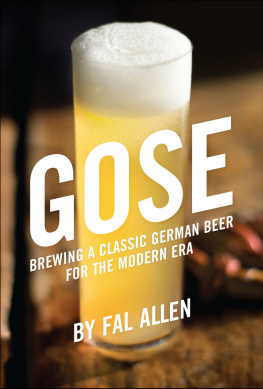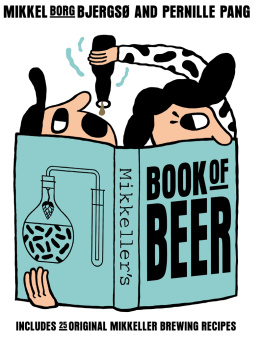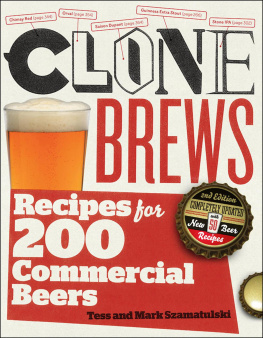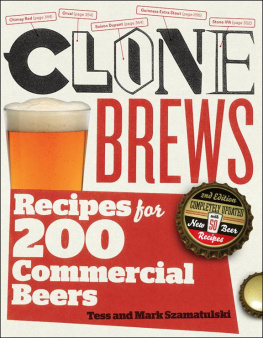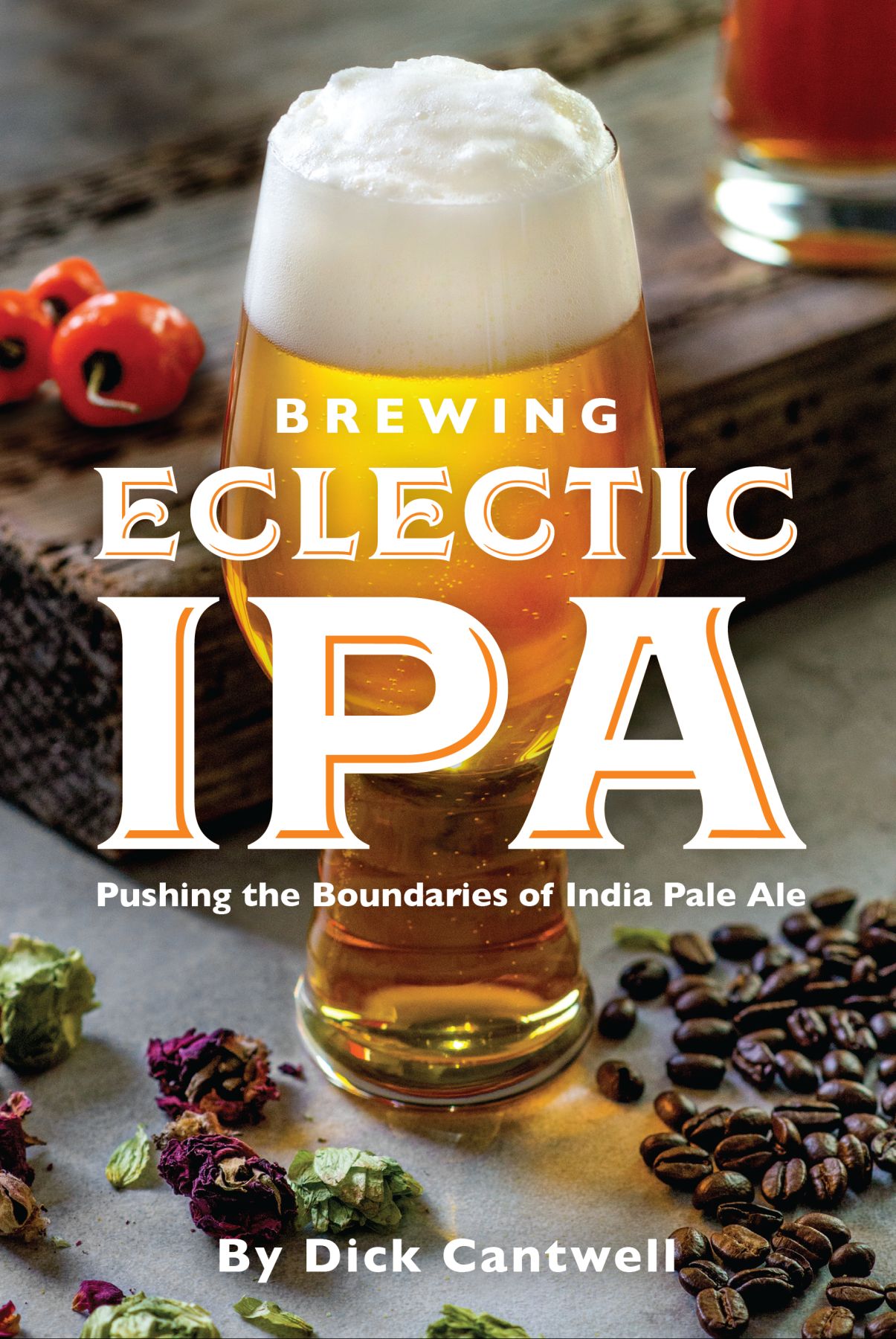
BREWING
ECLECTIC
IPA
Pushing the Boundaries of India Pale Ale
BY DICK CANTWELL

Brewers Publications
A Division of the Brewers Association
PO Box 1679, Boulder, Colorado 80306-1679
BrewersAssociation.org
BrewersPublications.com
Copyright 2018 by Brewers Association
All rights reserved. No portion of this book may be reproduced in any form without written permission of the publisher. Neither the authors, editors, or publisher assume any responsibility for the use or misuse of information contained in this book.
ISBN-13: 978-1-938469-46-6
ISBN-13: 978-1-938469-47-3 (e-book)
Library of Congress Cataloging-in-Publication Data
Names: Cantwell, Dick, author.
Title: Brewing eclectic IPA : pushing the boundaries of India pale ale / by Dick Cantwell.
Description: Boulder, Colorado : Brewers Publications, a division of the Brewers Association, [2018] | Includes .
Identifiers: LCCN 2017060186 | ISBN 9781938469466 (pbk. : alk. paper)
Subjects: LCSH: Ale. | Microbreweries.
Classification: LCC TP578 .C36 2018 | DDC 663/.42--dc23 LC record available at https://lccn.loc.gov/2017060186
Publisher: Kristi Switzer
Technical Editors: Mitch Steele, Lindsay Barr
Copyediting: Iain Cox
Indexing: Doug Easton
Art Direction: Jason Smith
Graphic Design: Danny Harms
Production: Justin Petersen
Cover Photo: Luke Trautwein
To my sources.
TABLE OF CONTENTS
In the 40 years or so that American craft brewing has been in existence, one thing that has remained constant is the incredible rate at which change occurs in this industry and how quickly preferences for certain beer flavors and beer styles can change. In the beginning, in the late 1970s and early to mid-1980s, most craft brewers were brewing in the English style, brewing Americanized versions of British ales, such as pale ales, ESBs, porters, and stouts. Many brewpubs in those days offered up just three beers: a golden ale, an amber ale, and a dark ale. But being curious and passionate about beer and brewing history, homebrewers and professional brewers continued to research traditional beer styles. They discovered the story of India pale ale (IPA) and then attempted to brew their own versions. Some early craft brewers were old enough to remember the last traditionally brewed IPA in the United States, Ballantine IPA, which provided an inspiration as well. It was simply a natural progression that the new IPA style, brewed with an abundance of American hops, eventually made its way into the lineup of several breweries.
Craft brewers continue pushing the envelope of flavor, adopting new and unusual ingredients that expand the boundaries of classic beer styles while at the same time demonstrating reverence for the beers that have come before them. This willingness to take risks has driven the growth of craft beer, as people have gradually rediscovered flavor and rejected blandness in their food and drink choices over the past few decades. As the craft beer industry has grown and matured, it has been very interesting to watch what beers styles and fads have come and gone. Who remembers when raspberry and blueberry beers were all the rage? From the big brewers, dry beers and ice beers exploded into massive popularity and then died a very quick death. There was one point in the mid-1990s when red beers seemed poised to take over the brewing world. IPA showed a similar growth pattern, taking off in the 1990s and early 2000s to become the most popular craft-brewed style. But there are some key differences between what has happened with IPA and what happened to those other beer styles that burned out so quickly.
IPA has been the most popular beer style competing in the Great American Beer Festival competition year after year. This hasnt changed in the 20 years or so that entry number records have been made available, and IPA shows no signs of being supplanted by any other style. Brewers like brewing the IPA style, they like drinking IPAs, and they love hops. Now the beer drinking public has embraced hops in a big way. It is important to recognize that IPA is driven by hop flavor, because, with all the hop breeding and research that is currently being done, brewers will continually be able to evolve and refine the IPA style and their own IPA flavors. Theres only so much a brewer can do with a red ale, but the IPA style provides an almost limitless canvas with which to work, and that lends a lot to its sustainability as the worlds most popular craft beer style. In recent years, I have been privileged to evaluate, sample, and test brew with some amazing experimental hops that are being developed. These hops have a wide array of new and unusual flavors. I sampled hops that smelled like bubblegum, orange cream, lemon candy, key lime, strawberries, and even bourbon barrel flavors full of vanillin and coconut qualities. Once these experimental hops are released, I imagine they will lend their flavors to a new wave of IPA that is sure to come. Combining these new hop flavors with other exotic culinary ingredients will lead to more imaginative IPAs. The possibilities are endless.
When I published my book, IPA: Brewing Techniques, Recipes and the Evolution of India Pale Ale, in 2012, I knew several things in the book would likely be out of date very soon after I wrote it. Mistakenly though, I predicted that the new knowledge would come from historical research on the real origins of the IPA style. I knew so many talented and passionate brewing historians that were really diving into the history of IPA that I figured more game-changing details would quickly be forthcoming. Instead, what has happened is that IPA has branched off into many substyles, many more than I could have ever predicted. As little as seven years ago, who would have known that citrus-infused IPAs, coffee IPAs, chocolate IPAs, Brett IPAs, and other IPAs combined with exotic foods and botanicals would have taken off to the extent that they have? And who could have dreamed up the popularity of hazy, juicy, and softly bittered New England IPA, a subset of the IPA style that is brewed so contrary to most seasoned brewers IPA brewing techniques that it has become one of the most controversial styles out there? It is so different than almost any IPA that has come before it with one very important exception, the New England IPA is massively hoppy in aroma and taste, like an IPA should be. It is proving itself to be a real thing, and not just a fad. IPAs are here to stay, and brewers, being curious, experimental, and risk takers, will continue to explore new flavor combinations with new hop varieties and will continue to try new and unconventional techniques to make their hoppy beer stand out from the crowd.
I cannot think of anyone more suited to documenting this emerging path of IPA than Dick Cantwell. Dick has been a tireless champion in the world of craft beer since he started brewing in Seattle in the early 1990s. After stints at a few local breweries, including Pike Brewing (which may have been where I first met him), Dick helped start Elysian Brewing in Seattle and became a national craft beer icon. There he brewed great IPAs like Space Dust IPA and the incredible Avatar Jasmine IPA that very much foretold the creation of this book. Dick co-authored the excellent Brewers Publications books, Barley Wine: History, Brewing Techniques, Recipes
Next page
